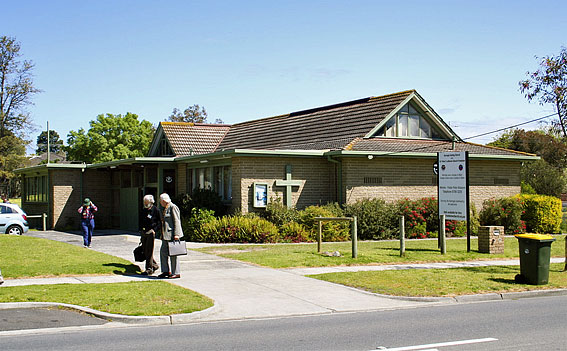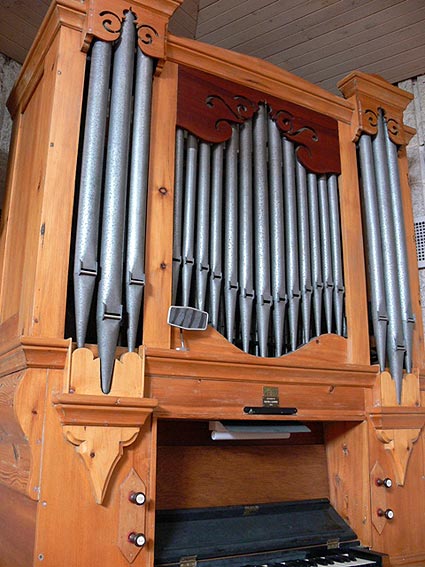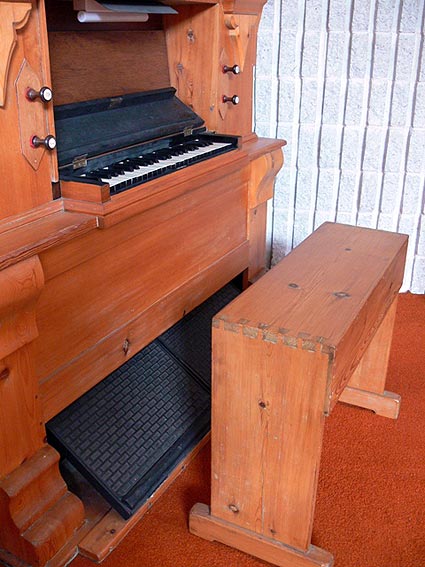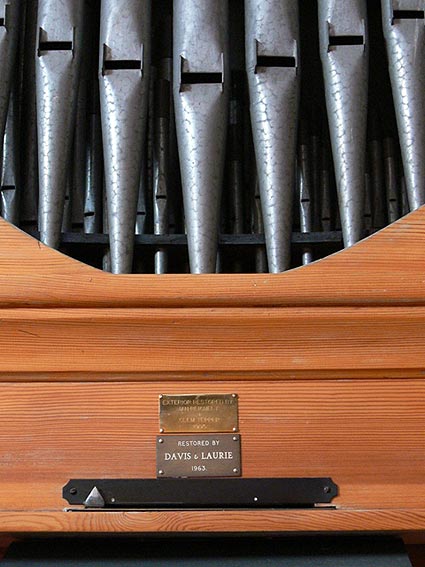St Peter’s Lutheran Church / Karingal Uniting Church
84 Karingal Drive, Frankston
B c.1875 Daniel Lemke for Immanuel Lutheran Church, Light Pass, SA;
res & inst 1963 Davis & Laurie St Peter's Anglican Church, Murrumbeena;
inst 1971 St Peter's Lutheran Church, Derna Crescent, Frankston, Laurie Pipe Organs.
Inst. present location 2002 Laurie Pipe Organs.
Removed 2021 and returned to Immanuel Lutheran Church hall, Light Pass, SA
1 manuals, 4 speaking stops, no pedals, foot-blown, tracker action, Man: 8.4.4.2.

Photo: Trevor Bunning (Oct. 2008)

In the 1960s a Lutheran Church was built in Frankston. More recently the Lutheran congregation has amalgamated with the Uniting Church congregation and moved to the Uniting Church building where they share the same pastor.1
The organ was built c.1875 by Daniel Heinrich Lemke (1832-1897) who emigrated to Australia in the 1850s from Grabowa Hauland, Posen, then in Prussia. It was built for Immanuel Lutheran Church, Light Pass. Lemke built at least four instruments for churches in the Barossa Valley, South Australia, other examples remaining at Gruenberg (1874), Ebenezer (1875) and Point Pass (1876) all built to an identical pattern and very much in the style of an 18th century German positiv.2 A pencilled note inside the organ, recorded by Marc Nobel, states "This organ was voiced, tuned and regulated by Robert Mackenzie, organbuilder of Adelaide".
When the Light Pass church acquired a new electric action organ by Davis & Laurie in 1962 the Lemke was taken in exchange, restored in the following year by this firm and placed in St Peter's Anglican Church, Murrumbeena. In 1970 it was replaced at Murrumbeena by a larger organ and installed in 1971 to St Peter's Lutheran Church, Frankston and moved in 2002 to the present church building by Laurie Pipe Organs.
The external finish of the casework was altered in 1962 through repainting; also the second 8 foot stopped rank was transposed to 4 feet and new drawstop labels (and drawstops?) inserted in place of Lemke's usual pitch designations. In 1995, the painted finish on the casework was removed and the pine and cedar woodwork repolished by Ian Reichelt and Clem Tepper. The mechanical action, pipework and foot blowing arrangements have been carefully preserved, making this one of the earliest examples of organ conservation in Australia.
| MANUAL Gedact Principal Flute Fifteenth |
8 4 4 2 |
Compass: CC-C 49 notes
Mechanical action
Foot blowing
Wind indicator
Spotted metal pipework3
1 Personal communication The Revd Peter Ghalayini to John Maidment March 2008
2 Marina Lutz, The Work Praises the Man: Organbuilders in the Barossa Valley. Nuriootpa: the author, 1996, pp. 15-24, 40-41.
3 Specification noted by John Maidment 1966
 |
 |
|
 |
 |
Photos: JRM (March 2008)